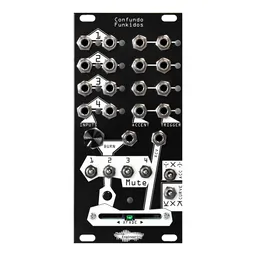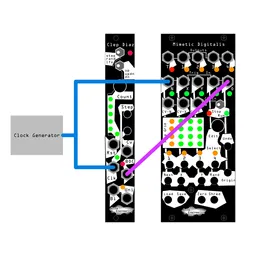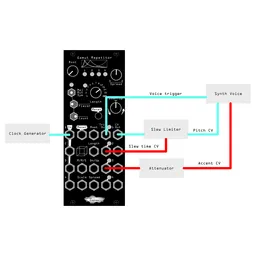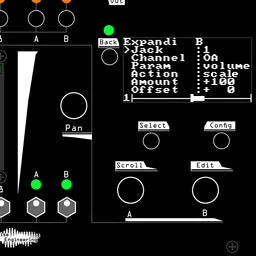Vice Virga is our sequential switch. It’s a wonderful utility that isn’t hard to use – but at first glance, it may be hard to know where to start. In today’s post, we’ll explore some of my favorite techniques that use Vice Virga to expand on the power of simple sequencers. Bonus: these techniques work in even the smallest of systems!
What is a sequential switch?
A sequential switch is a utility that can dynamically change routing in a patch. It will have a number of signal inputs and outputs, and CV or trigger inputs that change how the ins are connected to the outs.
Many sequential switches have a single input and multiple outputs, or a single output and multiple inputs, but Vice Virga has an equal number of ins and outs. It can function in the same way as a traditional sequential switch, or it can do a lot more – it all depends on how you patch it.
Simple settings for Vice Virga

Vice Virga has a number of options that change its behavior. In these patches, we’ll only be changing routings with the Adv trigger input, and we’ll keep the advance direction (Adv) switch in the Fwd position. We’ll also be using the group (Grp set to 2 or 4), which give us four * 2 in/2 out switches or two * 4 in/4 out switches respectively.
Lastly, the behavior (Beh) switch can be kept in its Seq position for most patches: this makes it advance linearly top to bottom when it’s advanced, and is a good choice when repeated results are desired.
If you’d like to add some randomization, the 1>1? behavior (Beh) setting randomly changes the routing while respecting the Grp setting and maintaining a single input to single output relationship. The LEDs are especially helpful when using this mode, as they always display the destination of the first input in their group.
Sequence distribution with sequential switches
If you have a single sequencer that you’d like to use to control multiple voices, a switch like Vice Virga can be quite useful. In group 2 mode, we have four * 2-channel switches that can be used to move signals around. I like to patch the top group with pitch CV, and the next group with gate signals. Each time the switch is advanced the pattern will be sent to a different voice. This works especially well if the voices are tuned, for example, a fifth apart, which automatically creates a nice counterpart.
This technique can be expanded to be more complex, too: Vice Virga’s group 4 mode gives us two * 4-channel switches, meaning we can apply the above to four different voices instead of just two. When using 4 voices, we can also add some randomization to the process: if we change the behavior switch (Beh) to 1>1? the routing will be randomly sent to different voices on each advance.
We can also use CV to control routings: I like using slow sequencers for this, but I’ve had great results from LFOs, clocked random sources, and envelopes, too.
Sequence extension with sequential switches
Since Vice Virga has eight inputs as well as eight outputs, we can create new patterns by switching between multiple sequencers. This works with both CV and trigger sequencing: for example, we can extend a four-channel sequencer like Mimetic Digitalis by patching its outputs to Vice Virga and switching to a new one with a clock divider every 16 beats.
We can also create new trigger patterns with a multi-output clock divider like our classic Integra Solum by patching different divisions to Vice Virga’s inputs, then swapping them every few beats. Randomization is quite fun here, too!
Vice Virga has an equal number of inputs and outputs, which differs slightly from more traditional switches. This means that its behavior depends entirely on how you patch it, and it also adds some interesting flexibility. If we use the patch above but patch outs 2, 3, and 4 to different voices we can easily create a full trigger pattern for a whole rhythm section!






